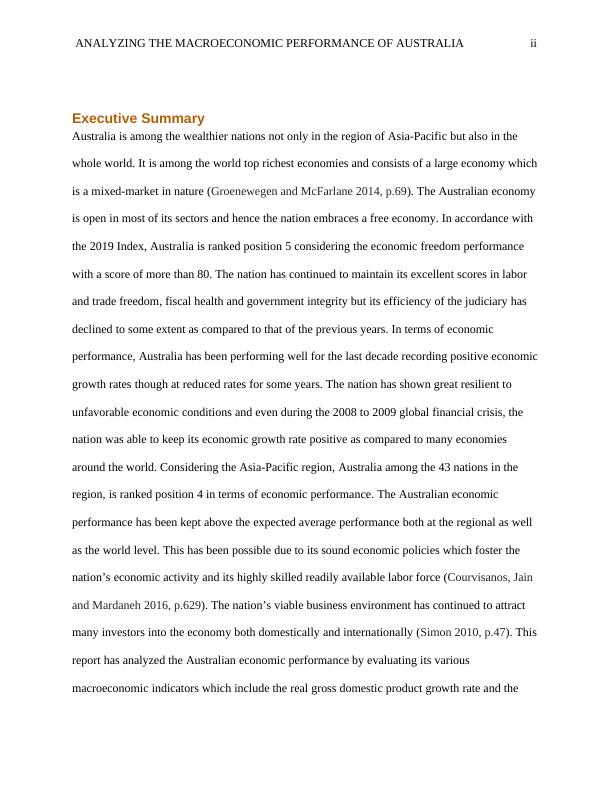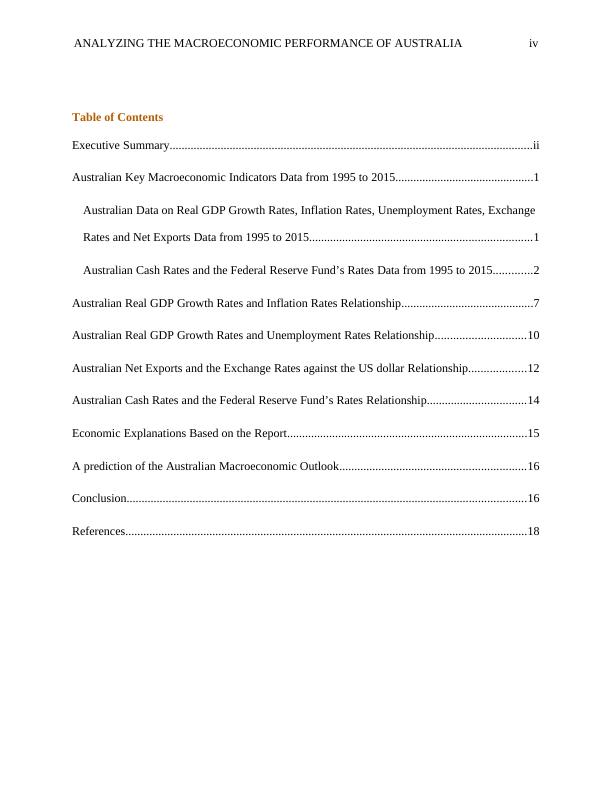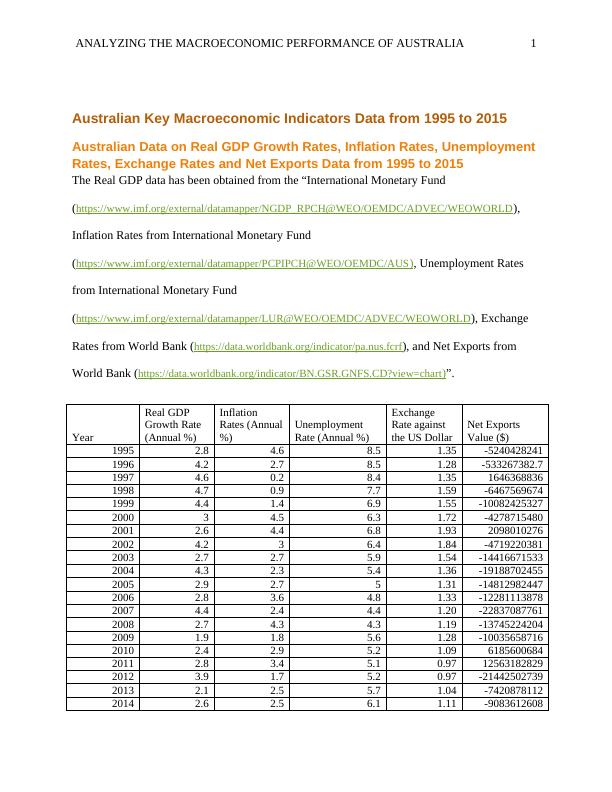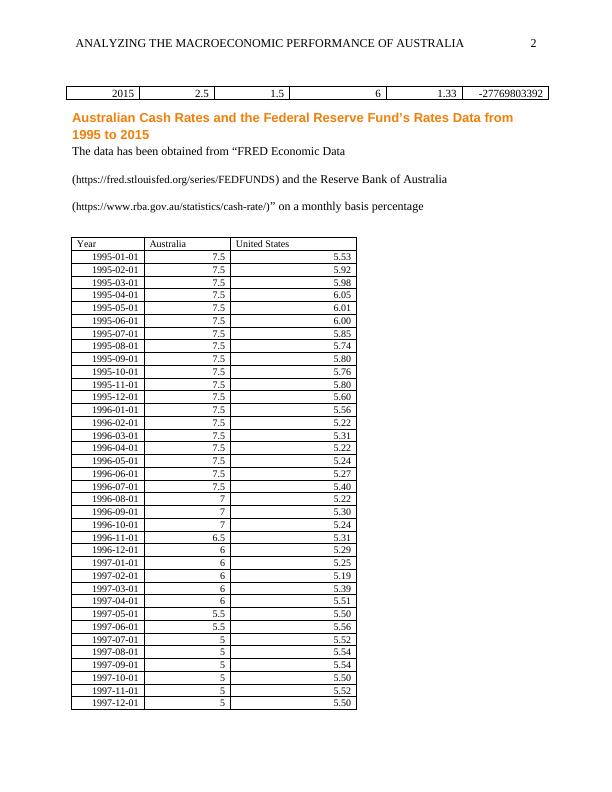Analyzing the Macroeconomic Performance of Australia
23 Pages4820 Words68 Views
Added on 2023-01-04
About This Document
This report analyzes the macroeconomic performance of Australia by evaluating its various macroeconomic indicators such as real GDP growth rate, inflation, unemployment, and exchange rates. It discusses the country's economic performance, its ranking in the Asia-Pacific region, and the factors contributing to its success. The report also provides data on key macroeconomic indicators from 1995 to 2015 and examines the relationship between these indicators. Based on the analysis, the report concludes that Australia's economic performance is good and predicts better results in the future.
Analyzing the Macroeconomic Performance of Australia
Added on 2023-01-04
ShareRelated Documents
End of preview
Want to access all the pages? Upload your documents or become a member.
Analysis of Australian Macroeconomic Performance
|25
|5048
|20
Macroeconomics Performance of Australia
|14
|4190
|34
Evaluation of Macroeconomic Performance of Australia and New Zealand
|16
|3932
|350
Comparative Analysis of Macroeconomic Performance of Australia and USA
|21
|4999
|495
The Current Australian Macro-Economy Analysis
|15
|3308
|57
Economics Assignment: GDP Growth
|22
|4253
|230






